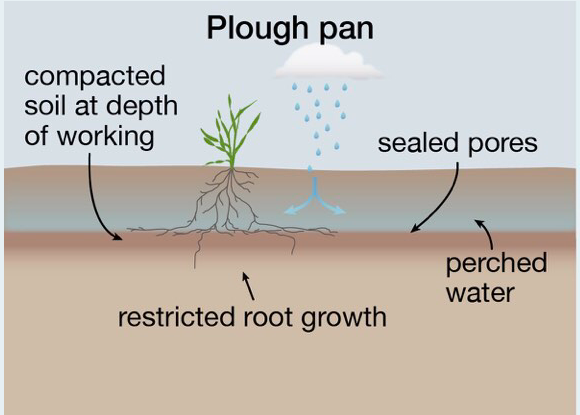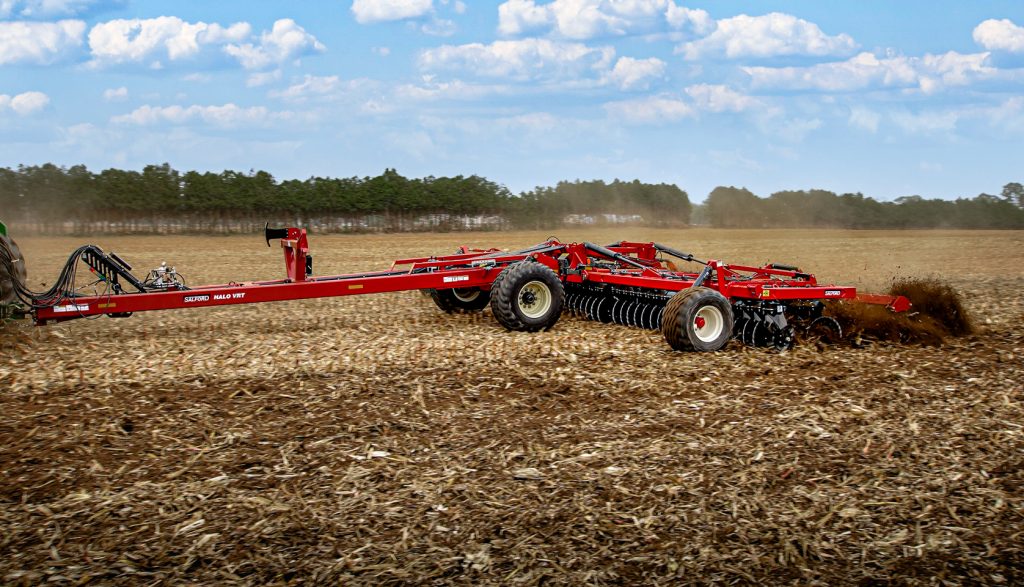Are you tired of struggling with your current plough every planting season? You know the frustration—trying to coax your machine through stubborn soil, only to end up with uneven results.
The secret to a thriving, productive farm might just lie in choosing the right plough for your specific soil type. Imagine having a plough that glides effortlessly through your fields, saving you time, energy, and money. Intrigued? You’re not alone.
Many farmers have transformed their yields by switching to high-performance ploughs tailored for different soil types. We’ll unveil the key to unlocking the full potential of your land, ensuring every turn of your plough brings you closer to a bountiful harvest. Keep reading to discover how the right equipment can revolutionize your farming experience.

Choosing The Right Plough
Selecting the right plough ensures optimal performance for varying soil types. High-performance ploughs enhance efficiency, adapting to different terrains effortlessly. Choose wisely to maximize productivity and maintain soil health.
Choosing the right plough can make a world of difference in farming. Each soil type has unique needs, and having the right equipment can lead to better yields and healthier crops. Imagine standing in a field, ready to dig in but unsure of which plough to use. Your choice can determine the success of your harvest. Here’s a guide to help you make an informed decision.Understanding Your Soil Type
Before you select a plough, take a closer look at your soil. Is it sandy, clay, or loamy? Each type has distinct characteristics. Sandy soil is light and drains quickly. Clay holds moisture but can be tough to work. Loamy is balanced, offering a mix of sand, silt, and clay. Knowing your soil type is the first step in choosing the right plough.Matching Ploughs To Soil Types
Once you know your soil type, find a plough that suits it. For sandy soil, lightweight ploughs are ideal as they glide smoothly. Heavy-duty ploughs work well on clay, breaking through the dense earth. Loamy soil is versatile, allowing a range of ploughs. Choose one that enhances your soil’s natural strengths.Evaluating Plough Features
Every plough comes with features that cater to different needs. Consider the blade design, weight, and adjustability. A curved blade can slice through soil more efficiently. Adjustable ploughs offer flexibility, accommodating various conditions. Don’t overlook the importance of these features—they can greatly impact your productivity.Considering Your Farming Goals
Your farming goals should influence your plough choice. Are you focused on speed or precision? Do you aim for deep tilling or surface cultivation? Align your plough selection with your objectives to achieve desired results. Think about what you want to accomplish and choose accordingly.Learning From Experience
Sometimes, the best teacher is experience. Talk to other farmers or reflect on past seasons. What worked well? What didn’t? Use these insights to refine your choices. Perhaps you once struggled with a heavy plough in sandy soil. That experience can guide your next purchase.Asking The Right Questions
Ask yourself: Is my plough suitable for my soil? Does it align with my goals? Can it adapt to changing conditions? These questions help ensure your choice is effective. Consider them carefully to avoid costly mistakes. Making the right plough choice is more than a technical decision—it’s a strategic one. Equip yourself with the right tools, and your soil will reward you.Features Of High-performance Ploughs
High-performance ploughs offer significant benefits for farmers. These ploughs excel in different soil types. They ensure efficient and productive farming. Understanding their features helps in making informed decisions. Below are some key features of these ploughs.
1. Adjustable Depth ControlHigh-performance ploughs have adjustable depth settings. This feature allows farmers to plough at desired depths. It ensures better soil aeration and nutrient mixing. Adjustable depth control is crucial for different crop needs.
2. Robust Build QualityDurability matters in high-performance ploughs. They are built with strong materials. This ensures a longer lifespan. Farmers face less downtime and maintenance costs.
3. Efficient Soil TurningThese ploughs are designed for efficient soil turning. They help in breaking up soil clods. This provides better seedbed preparation. Enhanced soil structure boosts crop growth.
4. Compatibility with TractorsHigh-performance ploughs fit most modern tractors. They offer easy attachment and detachment. This feature saves time and labor. Farmers can switch between equipment smoothly.
5. Cost-EffectivenessWhile the initial investment might be high, the benefits are worthwhile. Reduced fuel costs and improved efficiency make them economical. Over time, they prove to be a smart choice.
Ploughs For Sandy Soils
Sandy soils require specialized ploughs for effective cultivation. High-performance ploughs adapt easily to various soil types. These tools ensure efficient soil turnover and better crop yield.
Ploughs for sandy soils can significantly impact the efficiency and productivity of your farming. Sandy soils are known for their loose texture and excellent drainage, but they also pose unique challenges. Choosing the right plough for sandy soils can help you enhance soil structure and boost crop yield. ###Understanding Sandy Soils
Sandy soils contain a high percentage of sand particles. They are gritty and loose, which can make nutrient retention a challenge. Water drains quickly, leading to potential nutrient washout. Despite these challenges, sandy soils warm up quickly in spring. This can give you an early start in the growing season. To make the most of these characteristics, a high-performance plough is essential. ###Features Of Ploughs For Sandy Soils
Ploughs designed for sandy soils often have adjustable depth settings. This feature allows you to control how deep the plough penetrates the soil, preventing excessive soil disruption. Lightweight materials are another key feature. Heavy ploughs can compact sandy soils, reducing their natural drainage properties. Look for ploughs that balance weight with durability. A smooth moldboard is also beneficial. It reduces soil sticking, which is common in sandy textures. Ensuring your plough has this feature can improve efficiency. ###Benefits Of Using The Right Plough
Using a plough tailored for sandy soils can improve aeration and root growth. This can lead to healthier crops and better yields. Additionally, it minimizes soil erosion. Sandy soils are prone to erosion, especially after heavy rains. A suitable plough helps keep the soil intact. You’ll also find that the right plough reduces fuel and time consumption. This means more savings and less environmental impact. ###Personal Experience With Sandy Soil Ploughing
I once helped a friend plough his sandy farm in early spring. He was using an old, heavy plough which compacted the soil and made it difficult to manage. We switched to a lightweight, adjustable plough, and the difference was immediate. The soil maintained its structure, and we noticed better water retention. By the end of the season, the crop yield had improved significantly. This experience taught me the importance of selecting the right equipment. ###Choosing The Right Plough For Your Needs
When selecting a plough, consider the specific conditions of your soil. Not all sandy soils are the same, and factors like climate and crop type can influence your choice. Test different ploughs if possible. What works for one plot may not work for another. Consult with local experts or other farmers who have experience with sandy soils. Their insights can be invaluable in making the right decision. Are you ready to transform your sandy soil into a thriving farm? The right plough might just be your key to success.
Ploughs For Clay And Loamy Soils
High-performance ploughs enhance soil preparation for clay and loamy soils. These tools ensure efficient land cultivation. Suitable for various soil types, they improve agricultural productivity.
Ploughing clay and loamy soils requires specific tools tailored to their distinct characteristics. Both soil types present unique challenges but offer remarkable benefits when managed correctly. Understanding the right plough for these soils can make a significant difference in your farming outcomes. Let’s explore how to optimize your ploughing strategy for clay and loamy soils.Understanding Clay Soils
Clay soils are dense and sticky. They hold moisture well but can become compacted easily. This means ploughs need to be robust enough to break through the tough layers without causing too much disruption. Have you ever noticed how clay gets stuck on your boots during rainy days? Imagine ploughing through that with the wrong equipment. You risk getting stuck and damaging your tools.Choosing The Right Plough For Clay
You need a plough with strong blades that can slice through the clay without clogging. Consider ploughs with adjustable depth settings. They help manage compaction and ensure roots can penetrate easily. Look for models with self-cleaning designs. This feature prevents the clay from sticking and reduces downtime during ploughing.Loamy Soils: A Farmer’s Dream
Loamy soils are a mix of sand, silt, and clay. They are often considered ideal for farming because they retain moisture while draining well. However, they require a gentle touch to preserve their structure. Loamy soil is forgiving, but using the wrong plough can still lead to erosion and nutrient loss. You want to keep that perfect balance intact.Ploughs For Loamy Soils
Opt for ploughs with lighter frames that glide through loamy soils. This ensures the soil’s natural texture remains undisturbed. Use equipment designed for precision. It helps maintain the soil’s nutrient-rich profile, which is crucial for healthy crops.Maximizing Efficiency
Consider the timing of your ploughing. For clay soils, it’s best when they are slightly dry to avoid compaction. Loamy soils benefit from ploughing when moisture levels are moderate. Adjust your plough settings based on soil conditions. A one-size-fits-all approach won’t work here. Tailoring your methods can lead to healthier and more productive fields.Personal Insight
Years ago, I made the mistake of using a heavy-duty plough on loamy soil, thinking it would speed up the process. Instead, it led to erosion, and I spent weeks restoring the land. Learning from that, I now choose ploughs based on soil type, and my yield has improved remarkably. How about you? Have you ever faced challenges with ploughing specific soil types? Share your stories and solutions. Together, we can learn and grow better crops.
Conclusion
Selecting the right plough boosts soil health. Different soils need different tools. High-performance ploughs cater to these needs. Farmers can achieve better yields. They ensure efficient soil preparation. This leads to better crop growth. Investing in the right plough saves time.
It also saves resources. Understanding your soil type is crucial. Tailor your choice for the best results. Healthy soil means healthy crops. This benefits farmers and the environment. Choose wisely for success in agriculture.


